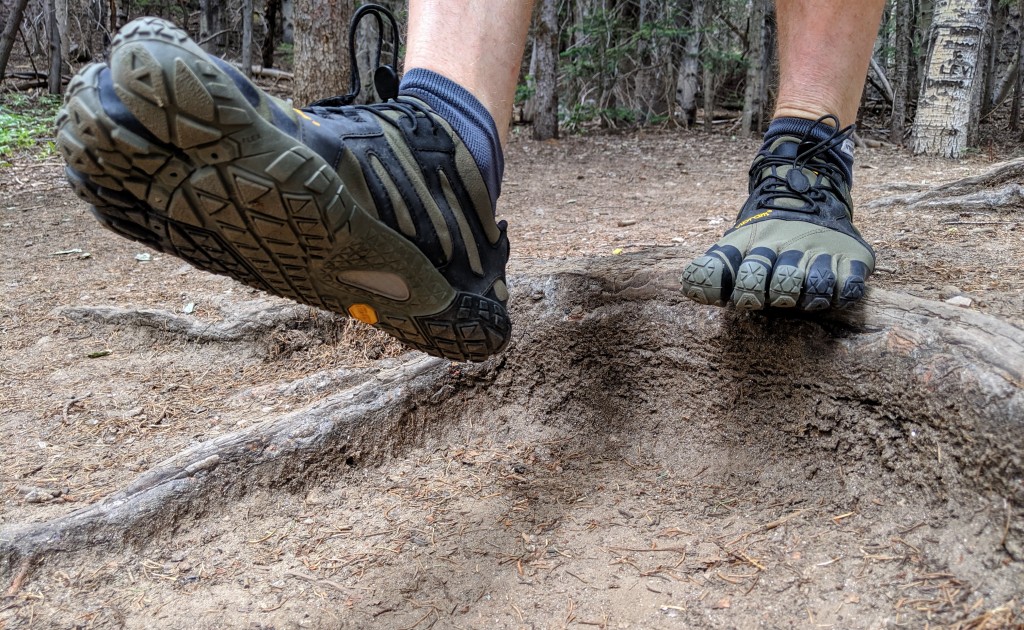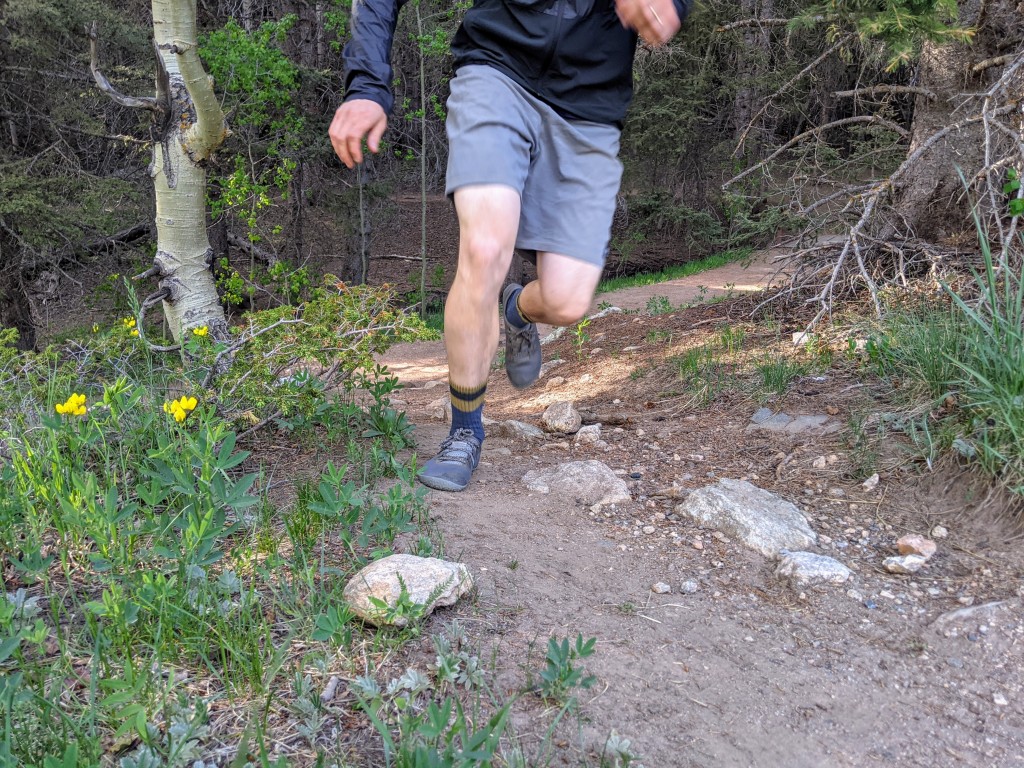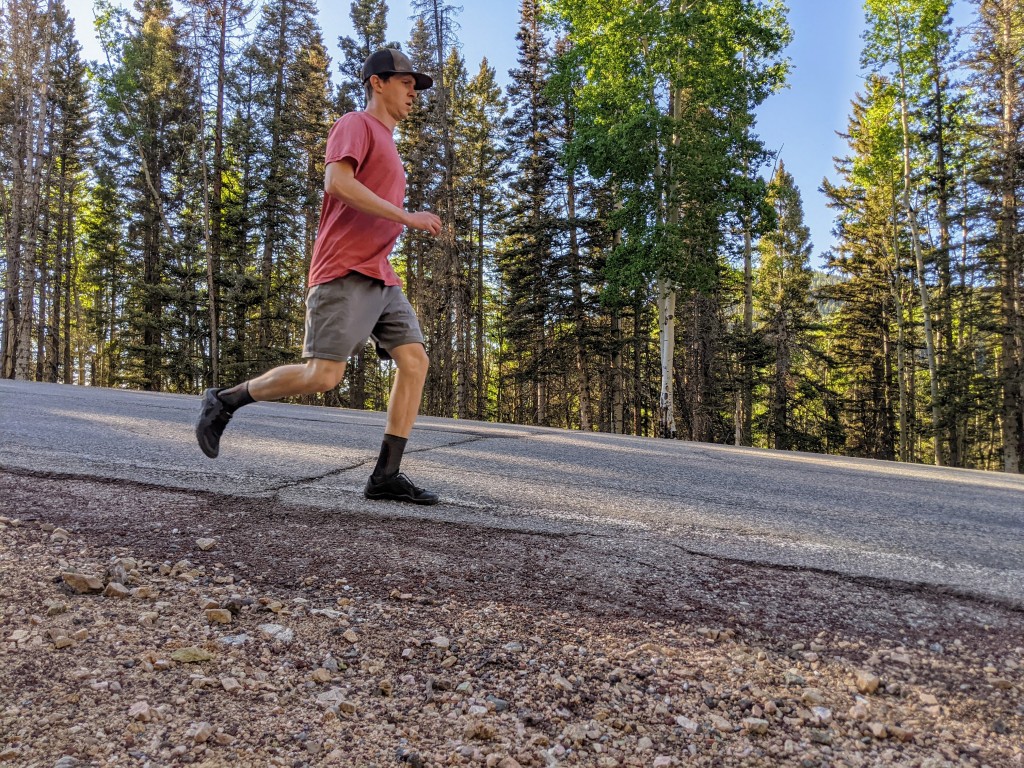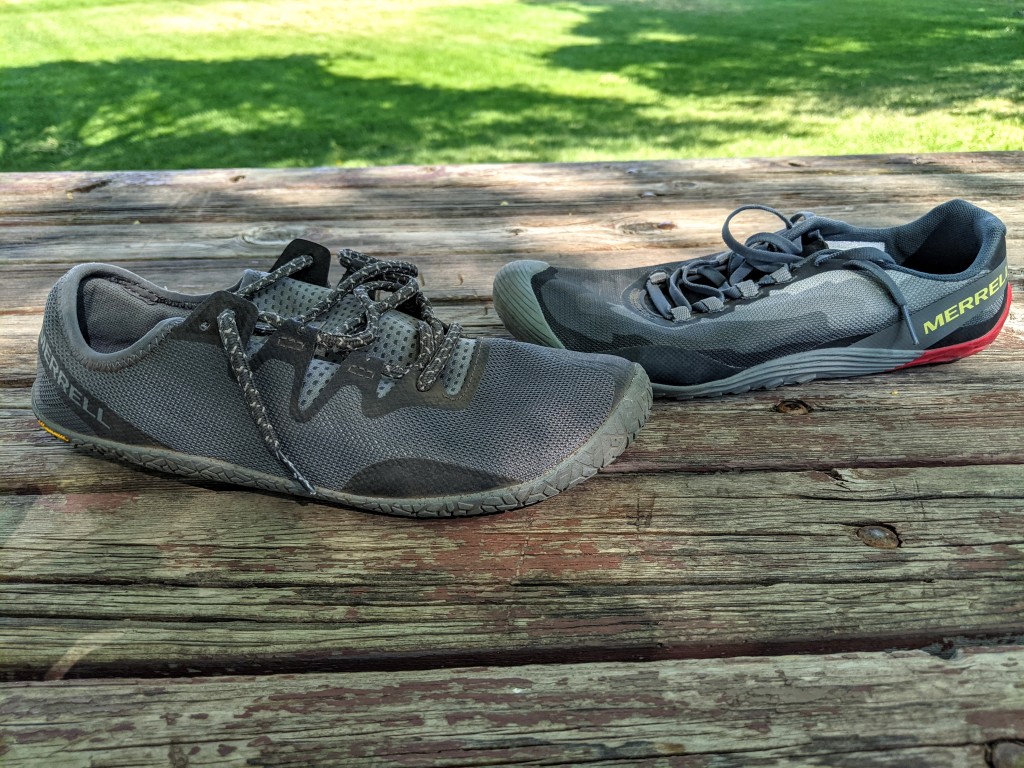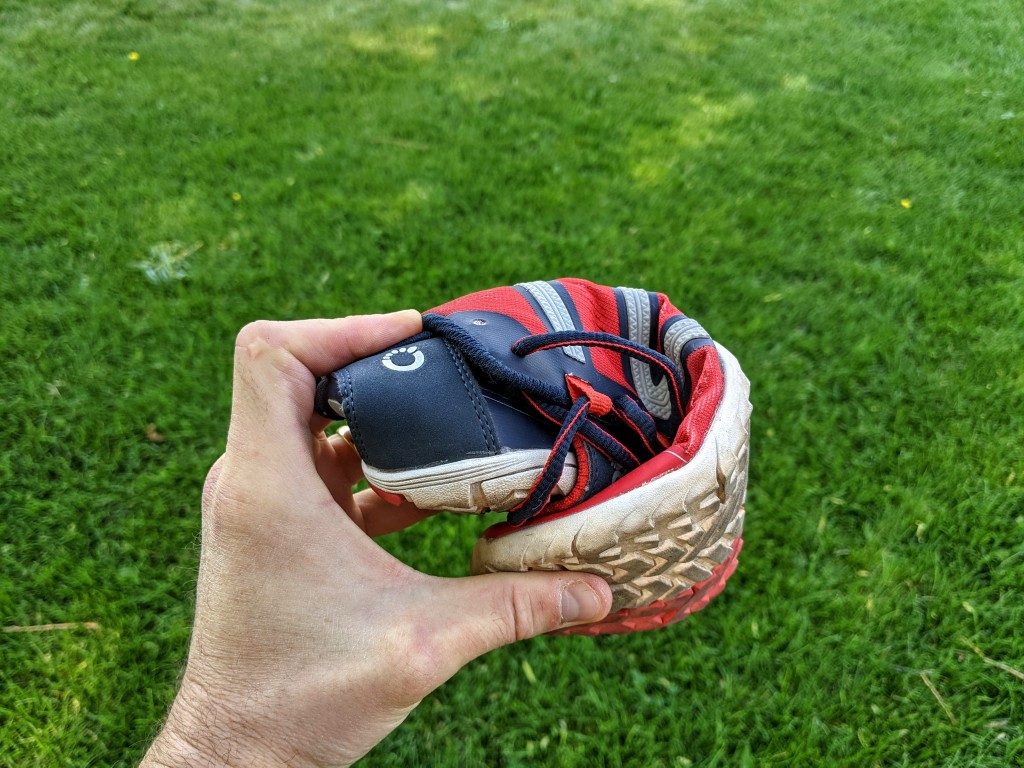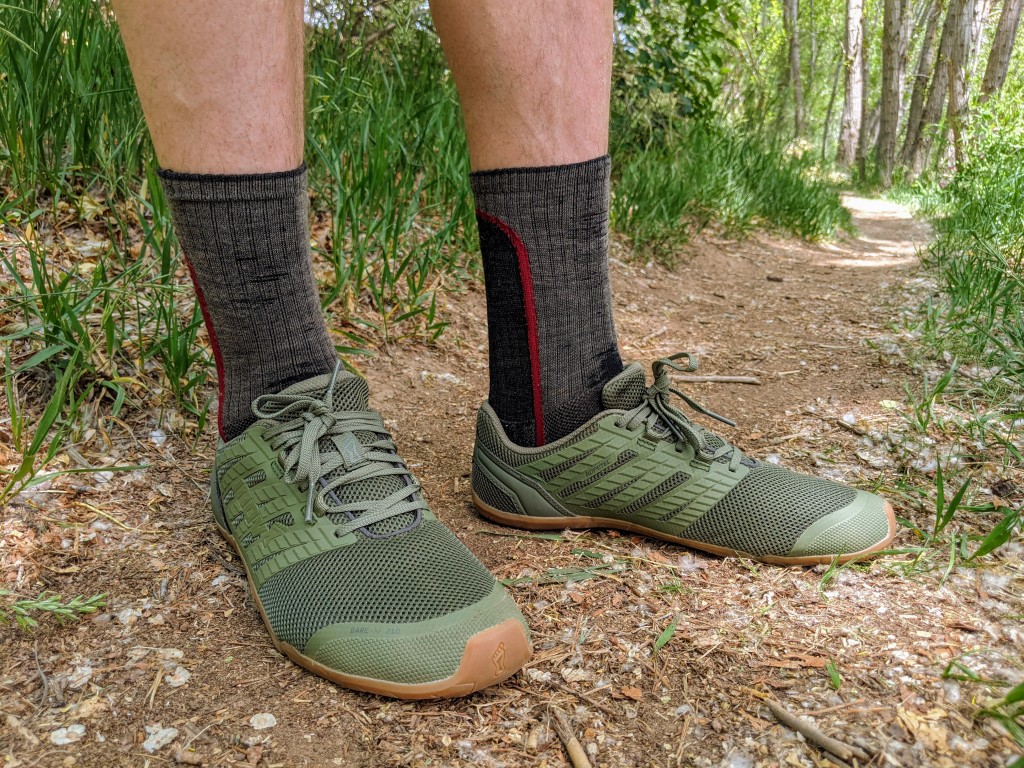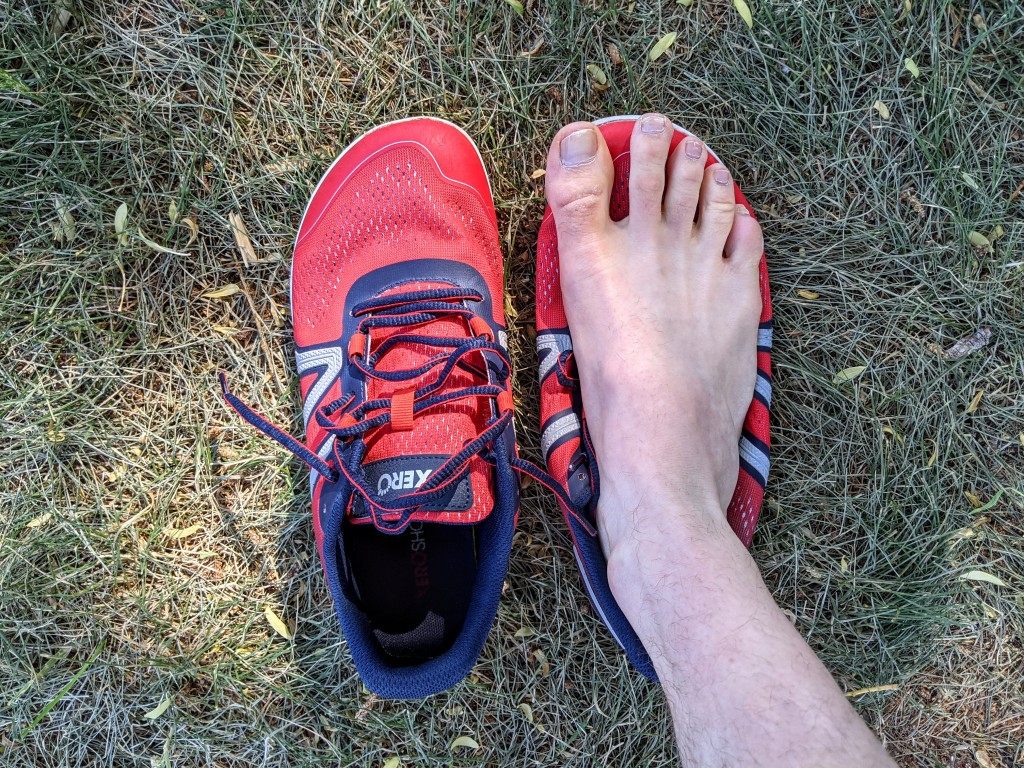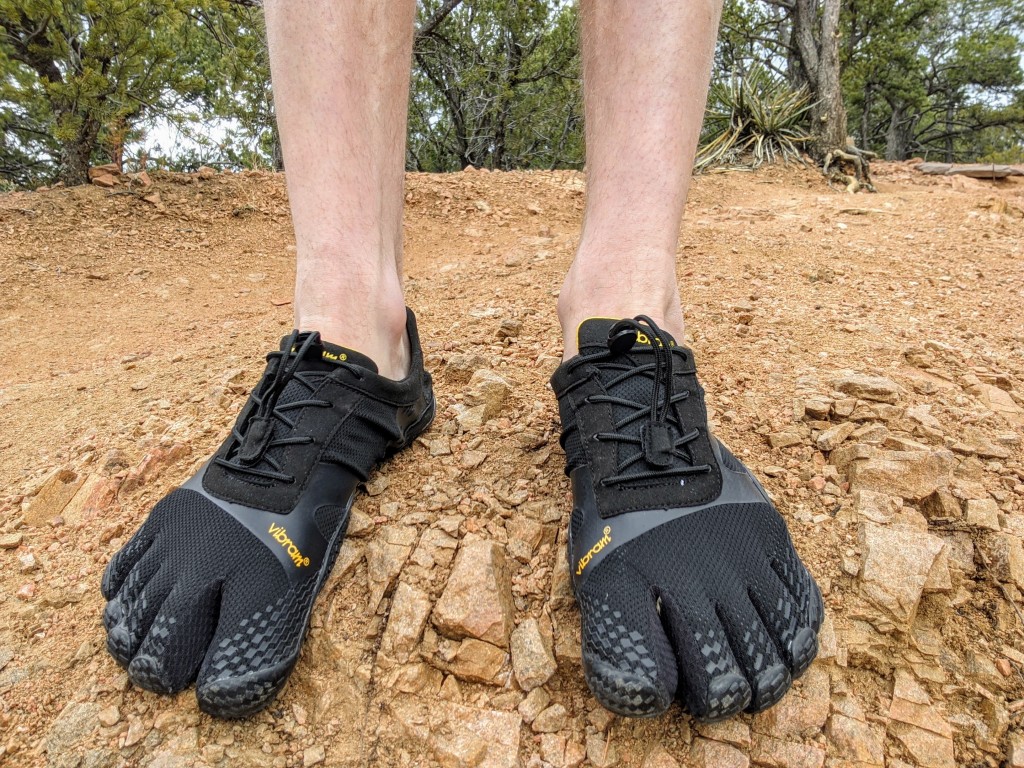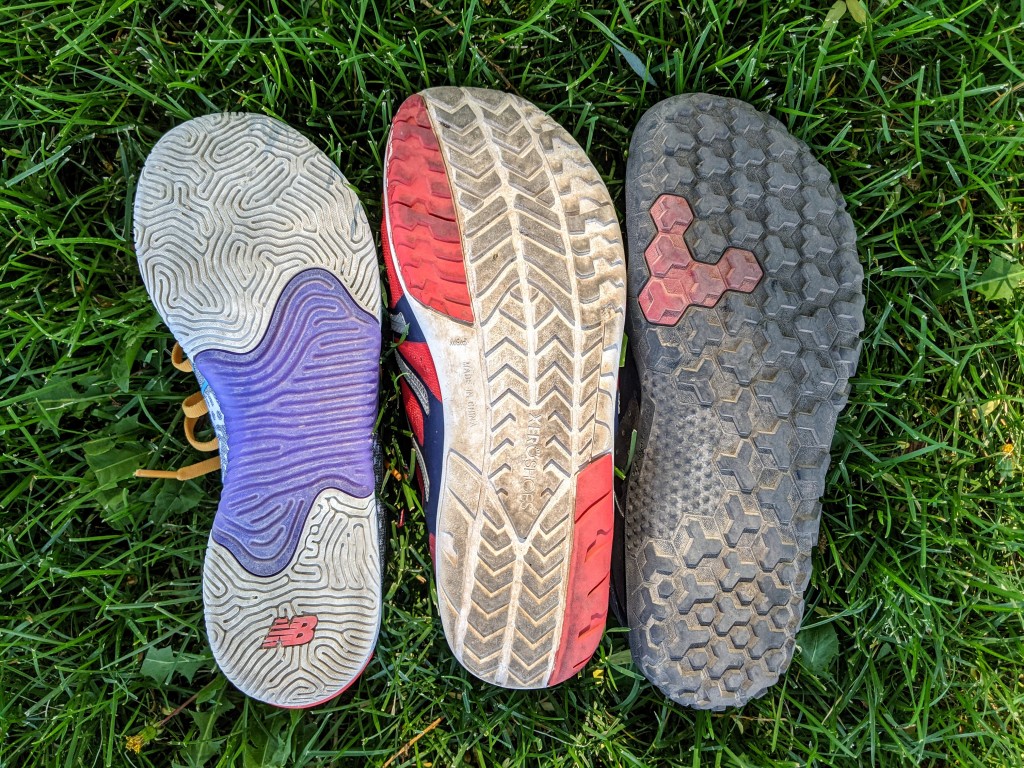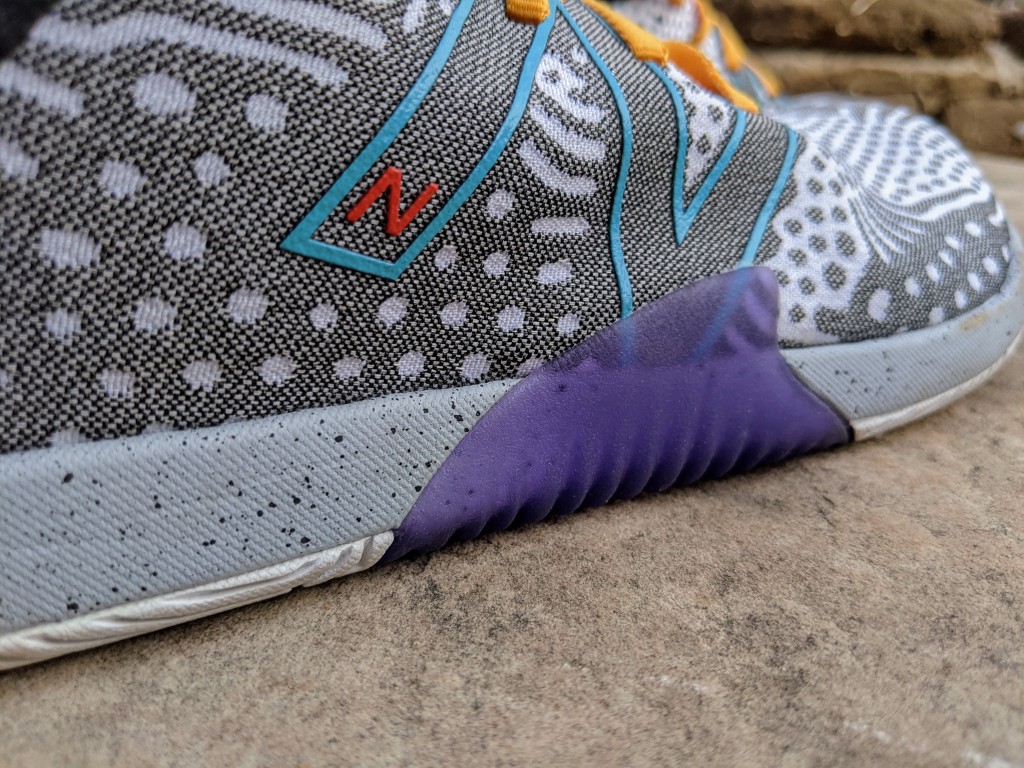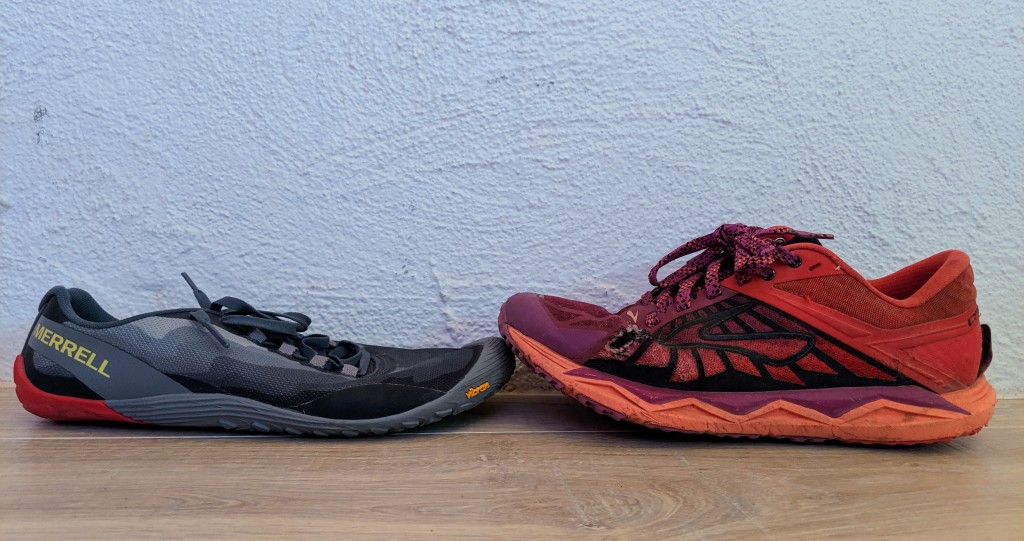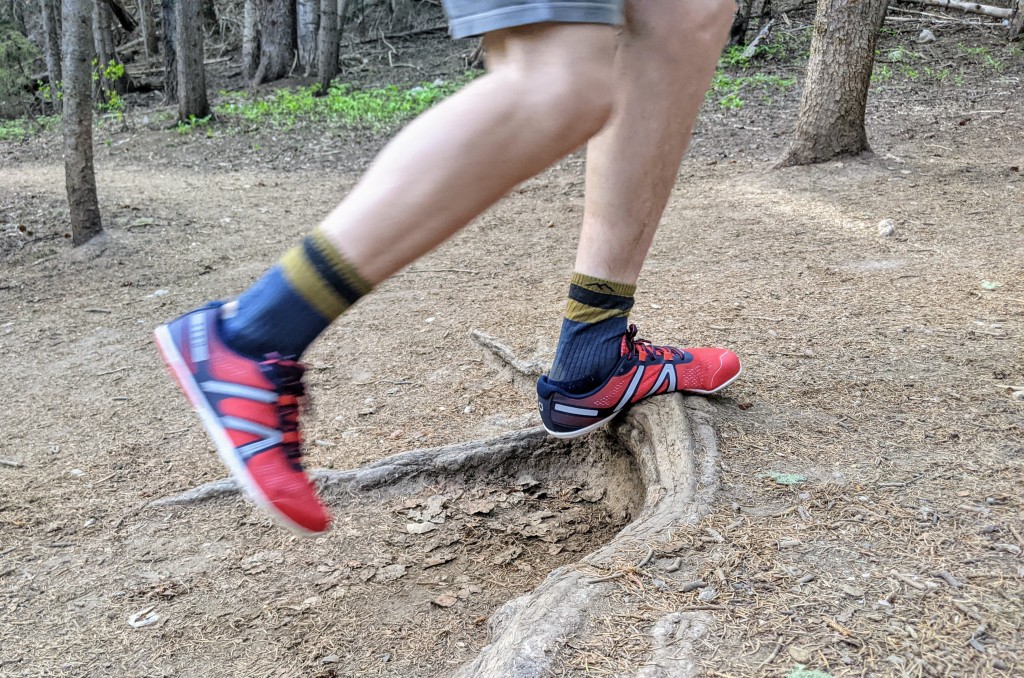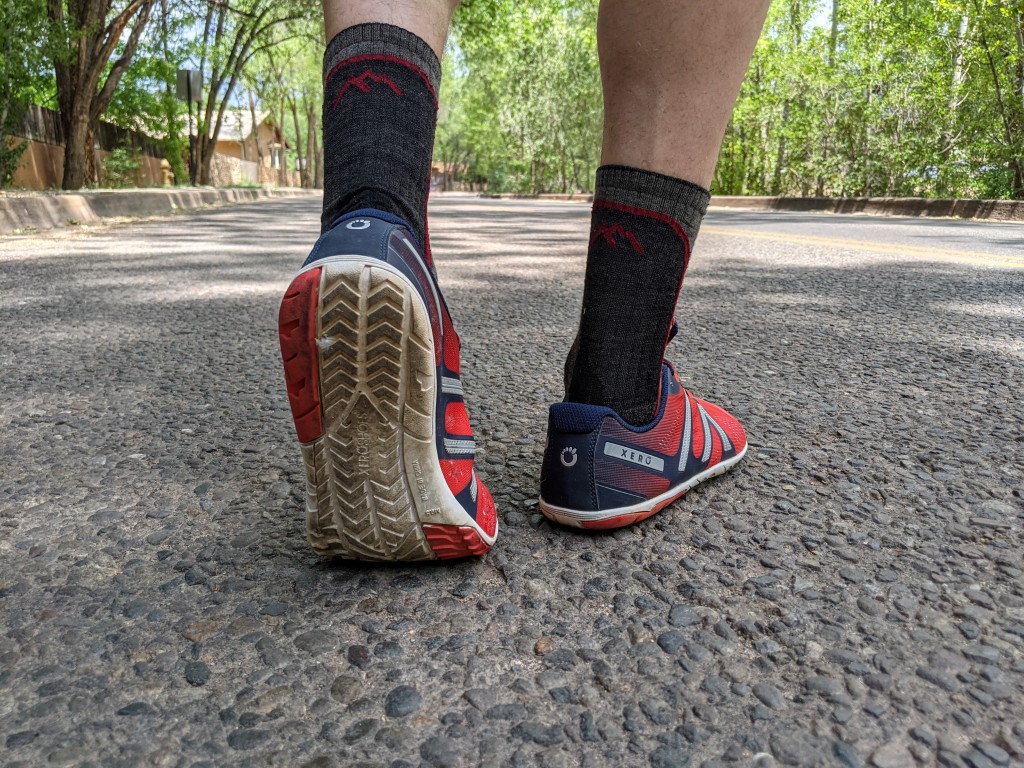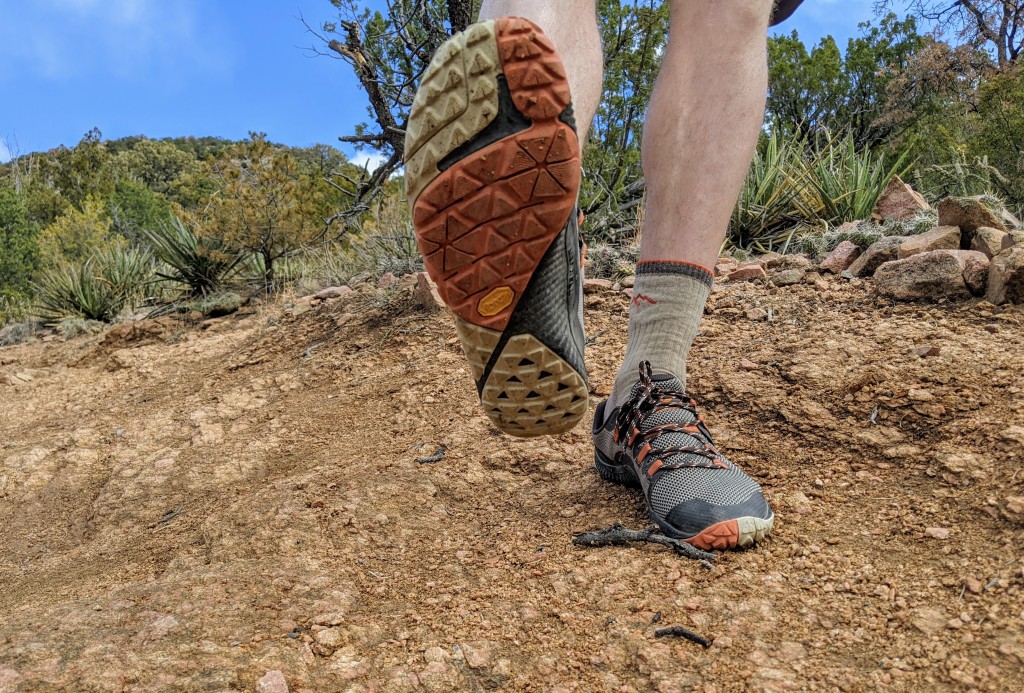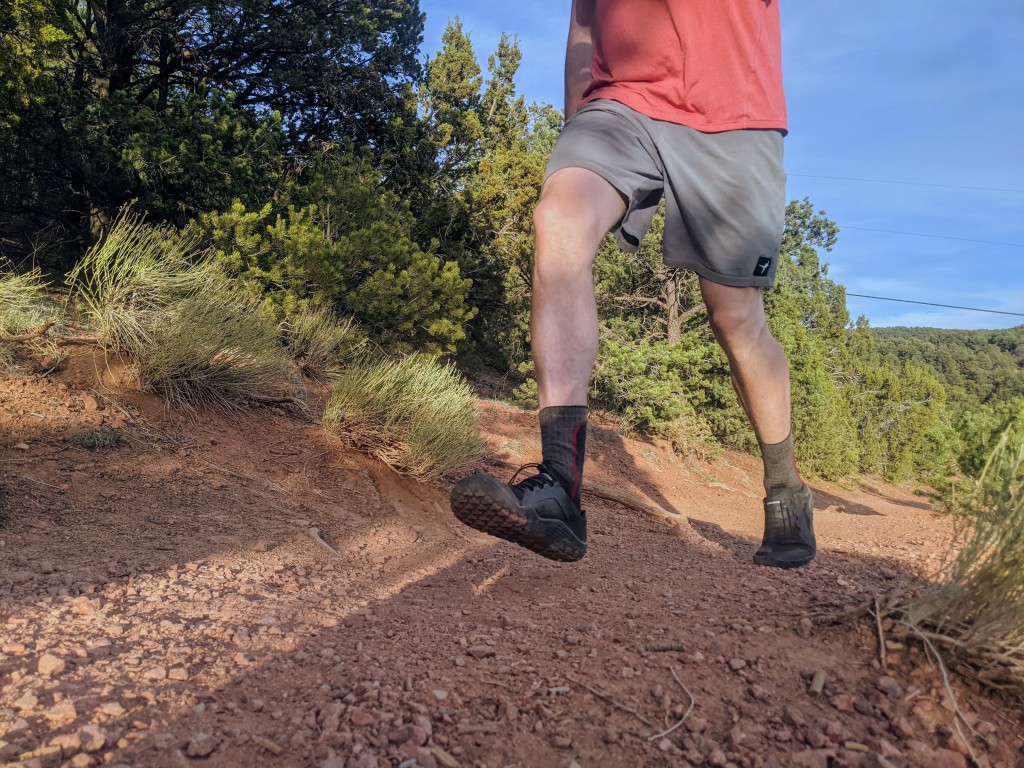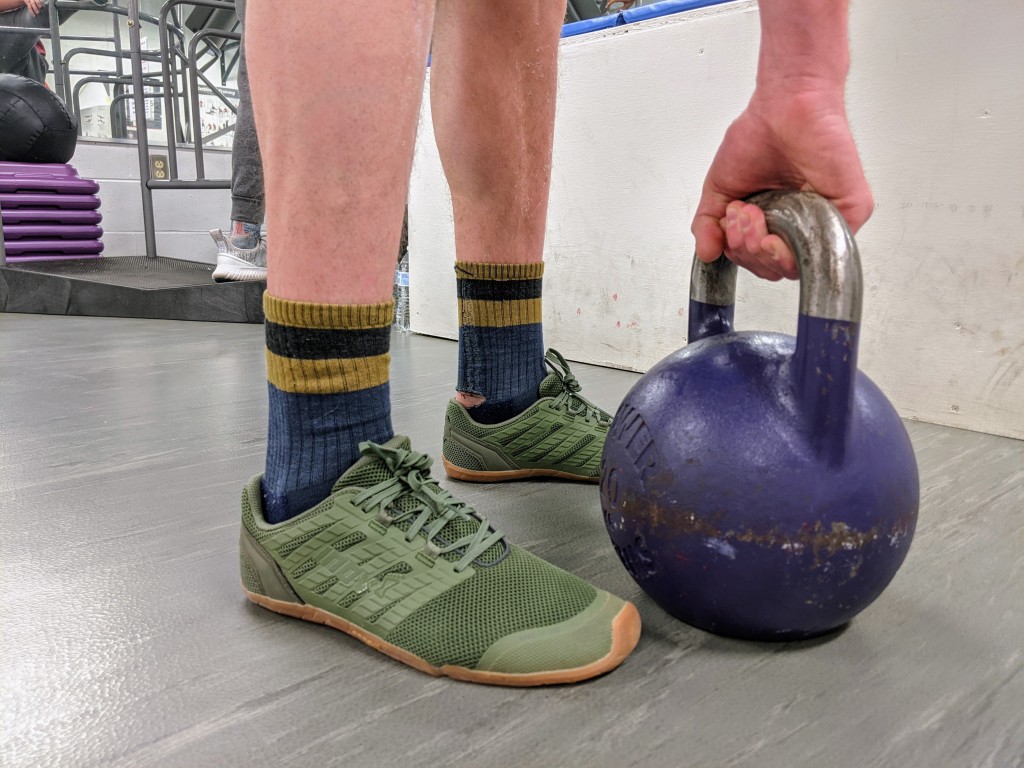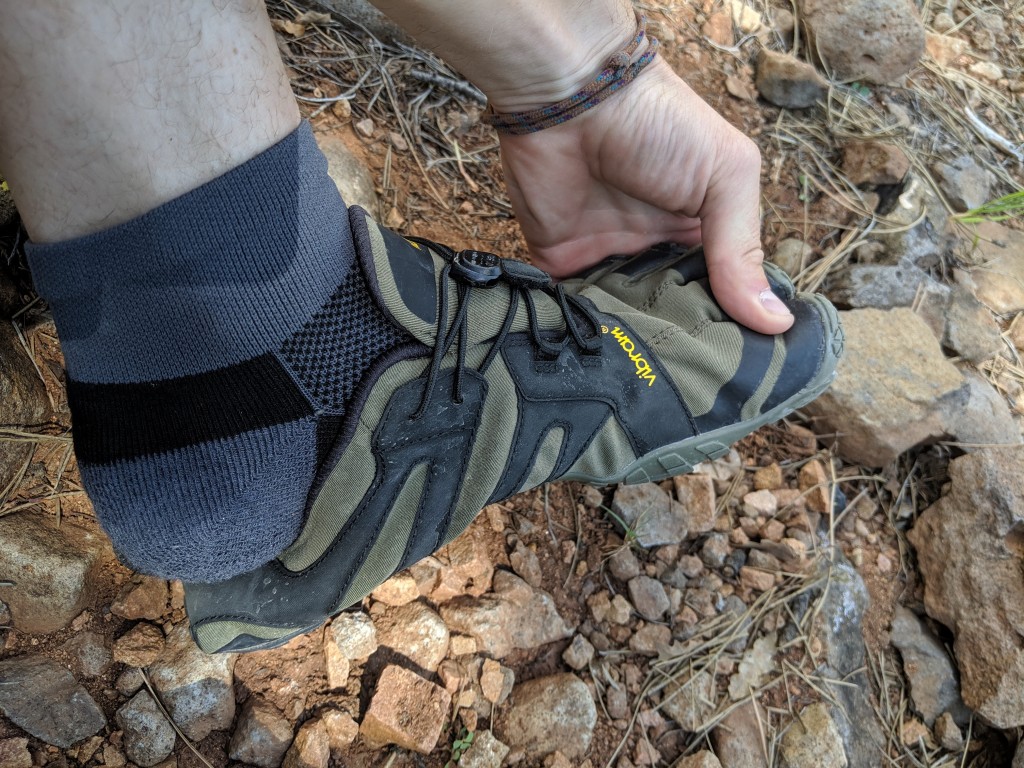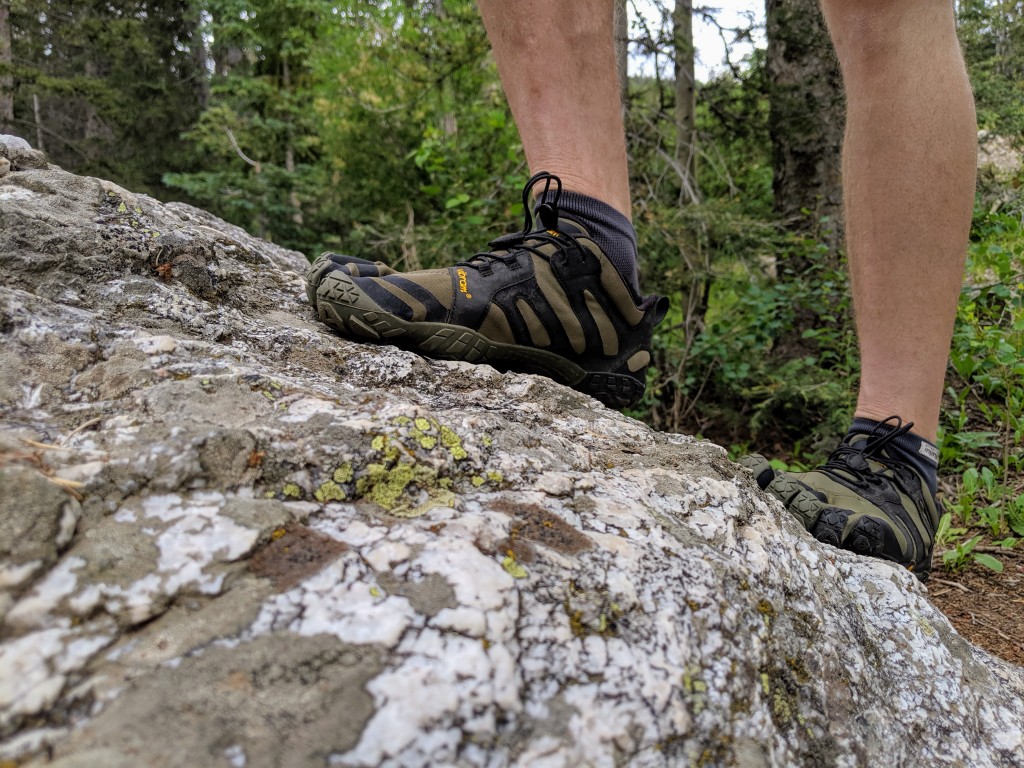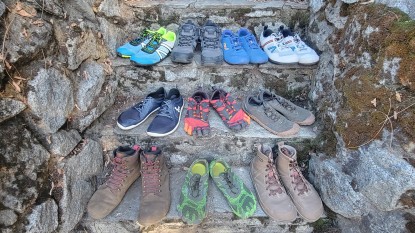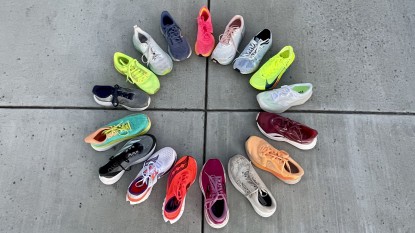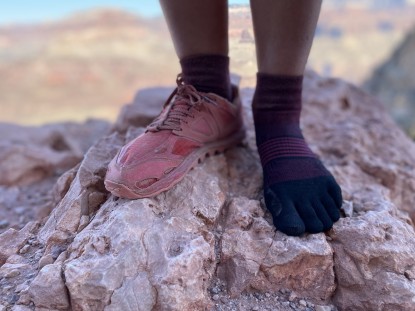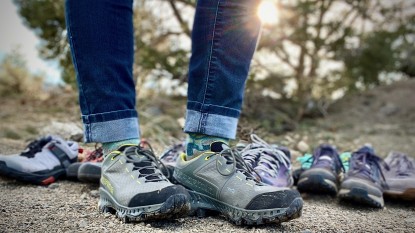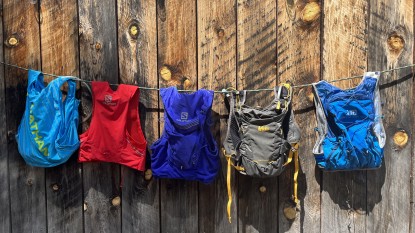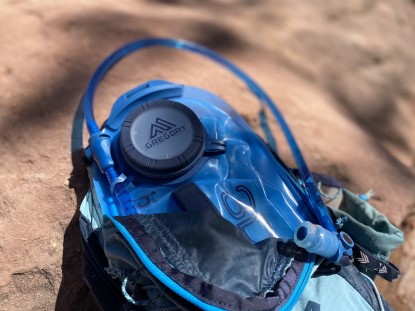Sorting through research about barefoot running and trying to decipher marketing claims about minimalist shoes can be complicated. These shoes might make up a niche in the industry, but there are important design-concepts that lay at the foundation of this particular type of running shoe. We created this article to help clarify some of the main considerations when narrowing down your selection, and then make specific recommendations to help choose the right shoe — so you can worry less about which pair of shoes to buy, and more about how to improve your running technique.
The Idea Behind Minimalist and Barefoot Shoes
As you probably deduced from their name, minimalist running shoes are designed specifically to cut down on the material between your feet and the ground, providing a natural — or “barefoot” — running experience. While a barefoot-enthusiast may argue that the only way to fulfill this natural experience is to do-away with shoes altogether, our modern world demands some sort of protection for our feet — even if it is only to walk into a convenience store. Road runners deal with broken glass, trail runners high-step sharp rocks, and we have yet to find a gym that doesn't require footwear. The point is, most of us need shoes. But we don't have to feel like our shoes define the way we run.
The best minimalist running shoe is like a good server at a fine-dining restaurant; they influence an overall better experience, yet you hardly notice their presence. These shoes support the natural movement of our feet while running; they encourage a more natural gait and running posture; they are lightweight and breathable enough that we feel nearly barefoot. Most importantly, they help us feel the terrain — what physiologists call “proprioception” — or the awareness of the position and movement of the body. These shoes are designed to facilitate an organic experience so that we can connect with the ground beneath our feet.
There is a lot of contention surrounding the differences between “barefoot” and “minimalist” when it comes to describing running shoes — like, can it even be called “barefoot running” if you are wearing shoes? We won't stake a claim in this article, and for practical purposes will use the two terms interchangeably.
Types of Shoes
There are a variety of minimalist shoes on the market, with designs that cover the spread from fashion to function. Since the boom of the late 2000's, minimalist shoes have become a staple design of the footwear industry. But beware the marketing claims — often the term “barefoot” is exaggerated or exploited so that a company may deceptively offer a model in this corner of the market. In the next section, we will explore what actually goes into these specialized shoes, so that you have a better understanding of the fundamentals of minimalist design.
When selecting models to test in our review of this category, we stuck to models that are marketed as running shoes. One of the ideas behind minimalism is using as little as possible, so of course, some of these models will crossover for use in the gym or to kick around town. But first-and-foremost they will perform well when running — either on the road, on the trail, or both.
Design Characteristics
One of the early masters of physiology, Leonardo da Vinci, declared, “the human foot is a masterpiece of engineering and a work of art.” Humans evolved wide feet with gripping toes and strong musculature to carry us over long distances. Unlike some other shoes on the market, minimalist shoes are not trying to fix how the human body was designed to run. While transitioning to minimalist shoes will undoubtedly influence your running style, almost all of the changes will come from adjustments to your body, not your shoes.
Following the mantra of minimalism, these shoes are designed with a simple structure; they have everything you need, and nothing you don't. In 2015, an international panel of experts were organized to come up with a definition of "minimalist" in an attempt to bring some consistency to the industry.
For a quick overview, REI does a great job describing minimalist and barefoot running basics. In this article, we will attempt to break-down some of the terms used in the definition above, as well as other important design characteristics you will come across in your research, and mold them into an idea of what makes up quality minimalist or barefoot shoes.
Flexibility
Our feet are incredibly flexible, but in a way that is not nearly as appreciated as with our hands. Toes splay outward and flex to grip the ground (see Toe Box and Grip sections below); our midfoot and arch tension to absorb impact and powerfully rebound; heels spread out to create a solid platform to support our body weight. A minimalist shoe should be equally flexible so that it does not prevent any of these critical, micro-movements. It is important that a shoe can flex well both longitudinally (folding, or flexion) and torsionally (twisting.) This will allow your toes to dig into soft dirt to push-off, and for your foot to make quick, side-to-side adjustments when running on uneven terrain.
Heel-to-Toe Drop
Heel-to-toe drop, or often simply referred to as “drop,” is the difference in the amount of cushioning a shoe has in the heel relative to the amount in the toe. A traditionally designed running shoe will include somewhere around 10-12mm of drop, meaning that your heel will be 10-12mm higher than your toes. This forces the foot into a forward incline when running, a position that is supposed to put you on the ball of your foot (the preferred striking position), but actually results most often in pronounced heel-strike. Ideally barefoot shoes will have “zero-drop,” where your heel and forefoot stand at the same level — like if you were standing barefoot. This even plane promotes a balanced running position, where you strike the ground with the forefoot first, allowing the arch to act as your foot's natural shock-absorber.
It must be noted that heel-to-toe drop and the overall amount of cushioning are independent features in shoe design. A new industry trend in maximalist running shoes is to design a shoe with little-to-no drop, but with beefy cushioning, like the Hoka Elevon. When it comes to minimalist shoes, it is therefore also vital to note “stack height,” discussed next.
Stack Height
Stack height refers to the material thickness of a shoe, and is typically measured at the center of the heel — the most cushioned location on a traditional running shoe — although often you will find measurements listed for both heel and forefoot. The stack height takes into consideration the outsole — including lugs (see Grip section below) — and the midsole, which often includes cushioning foam or protective plates. But this height measurement does not include the depth of the insole, which can also provide a significant amount of cushioning in a shoe. What this all boils down to is that the smaller the stack height, the less material between your foot and the ground and essentially a closer-to-barefoot running experience.
Cushioning
Building upon the characteristics introduced in “stack height,” traditional running shoes are often designed with some amount of cushioning the help absorb the unavoidable impact of running on hard surfaces. For some, like endurance trail runners, cushioning is important because they will be able to run for longer distances without putting quite as much stress on their bodies. But it might be obvious that for minimalist runners, the more cushioning, the more material between your foot and the ground, and the further away we stray from a barefoot-running experience. The majority of cushioning is built into the midsole — the material sandwiched between the outsole and upper (the part that wraps around your foot) — and is likely comprised of some closed-cell foam, like EVA. Another common place to include cushioning is the insole — the footbed that slides into the bottom of the shoe. It is important to note that this is the feature where many make the distinction between minimalist — or in this case, minimally cushioned — and barefoot shoes.
Weight
Weight is maybe the most important factor when it comes to feeling like you are actually running barefoot. The less material your foot has to move with each stride, the more natural the barefoot-feel. The difference of a few ounces between minimalist and traditional running shoes may seem insignificant at first, but consider how that extra weight adds up over the span of many miles. The same theory expounded by minimalist backpackers holds true here: the less you have to carry and the more efficiently you can travel, the better the experience.
Toe Box
Maybe the most important characteristic of the unshod barefoot is its ability to spread out to create a stable platform under weight — from the heels up through the midfoot, but most noticeably in the toes. In their natural state, our toes are designed spread wide apart — what physiologists call “toe splay.”
Think back to the last time you tried shoes on in a store: you are lacing up a potential new pair, everything feels roomy and comfortable, and then the salesperson asks you to, “go ahead and stand up.” After a few moments walking around, you start to notice rubbing of your toes against the front of the shoe, or maybe pressure on the outside edge of your foot. This is because as you transitioned from an unweighted (sitting) position to a weighted (standing) position, your foot actually expanded to better support your weight. Think about the shape of a baby's foot — or if you cannot picture that, do a quick search for “unshod feet.” You will notice that the toes, and not the forefoot, are the widest part of a foot in its natural shape.
Minimalist shoes are designed with a wide toe box (the front-most part of the shoe) to accommodate wide toe splay that happens naturally when we are standing barefoot on a flat platform. In this case (thanks to a zero-drop design), our feet are standing “barefoot” — even if you are wearing socks — on a flat platform inside the shoe. When running, this helps with both stability, and also how we use our toes to grip the ground.
Grip
The outsole, or bottom rubber, of nearly all modern running shoes is designed as a lugged sole — the rubber is molded with a pattern of indentations and grooves. The lugged design has many benefits, including traction, grip, and slip-resistance. On a slippery surface, water is able to flow freely through these grooves, keeping you in contact with the ground and thus preventing a hydroplane-like slide. While the lugs on minimalist shoes will be much more shallow than those on traditionally designed trail runners, they are still used to shed water and enhance the natural grip of our feet. Running uphill and on flats, much of our grip originates in our toes, which flex independently of one another to contour to the terrain. On downhills, both toes and heels work together to spread out and help slow you down. In whatever way the outsole is designed to augment the grip of the shoe, it is important that it does not interfere with the natural movement of your foot.
Breathability
Our feet sweat when we run, and in their unshod state, that sweat quickly evaporates to cool our feet during prolonged periods of elevated body temperature. No surprise then that minimalist shoes try to mimic this by designing uppers — the fabric that actually wraps around your foot, including the tongue — of thin, lightweight, and breathable materials. Shoe design may incorporate things like mesh, neoprene, air vents, and linings that promote airflow and circulation between your foot and the shoe. Although it is nice to have that feeling of being barefoot inside the shoe, it is still a good idea for runners to wear socks. Not only are they super important for blister protection, but specialized running socks are moisture-wicking, which promotes breathability and overall foot health.
Related: Best Running Socks of 2024
Stability and Motion Control
One of the main principles of minimalist and barefoot running is that we will rely on many of the smaller, lesser-used muscles for shock absorption and stability, rather than passing that responsibility off onto the shoe. Adhering to the minimalist ideology that less is more, any of these motion-control technologies detract from our barefoot experience. To be clear upfront, a good minimalist shoe has NONE of what we are about to describe. But marketing for barefoot shoes has become murky waters, so it is good to be able to identify these terms.
Additional cushioning is in itself one of these additives, but there are a few other common forms of stability and motion controls:
Medial PostDense inserts that are stiffer than the rest of the midsole, used to control pronation — the natural side-to-side motion of the foot when running. Often you will see a shoe advertise a “dual-density midsole,” which means that an EVA foam that is firmer than the rest of the midsole foam was used in construction. These medial posts can also be made of thermoplastic urethane (often listed as a TPU).
Shank
A stiff piece of TPU that is formed as a part of the outsole, underneath the arch. This makes the middle portion of the shoe very stiff (both in torsion and flexion), and force the shoe to bend only at the toes.
Arch Support
Molded pieces of TPU inserted into the midsole, or EVA foam built into the insole, that keep the arch supported in that recognizable half-moon shape. But arch support in a shoe actually impedes the natural flex of our arches that is so important to both shock absorption and a powerful push-off.
Toe Spring
The upward curl of the toe box that has become so common in running shoes. This design is supposed to create a rocker motion to ease the transfer of weight, from heel to toe, as you transition from landing to push-off. This design immobilizes your toes in this upward position — known as dorsiflexion — a motion which helps tension your arch prior to striking the ground. But as a result, toes are unable to flex downward — known as plantar flexion — to push into and grab the ground, a movement important for balance when landing and power when pushing off.
Ground-Feel
What all of this is building towards — by actually stripping down in design — is creating a shoe that comes as close as possible to feeling like you are actually running barefoot. This may be summed up as ground-feel, or the barefoot accuracy of a shoe. This is the sum of the design attributes listed above, with a main focus on a thin outsole, zero-drop, a wide tox box, and a lot of flexibility with a lack of conventional support. The technical term related to ground-feel is “proprioception” — the awareness of body position and movement. This is directly related to the ability of our feet to sense stimuli, to then send signals upward with direct feedback for balance, posture, and gait.
Choosing the Right Shoe
That was a lot of design information. As a condensed overview: a good minimalist running shoe has a simple structure with minimal drop and cushioning, a flexible fit that mimics the shape of your foot, is lightweight and breathable, and only minimally obstructs the natural ground-feel of being barefoot.
You may have noticed that we used the word “natural” in nearly every explanation. It is simply the best way to describe the state of being barefoot. Nothing will equate to the pure feeling of being barefoot, but some of these shoes can come quite close. Now that we have reaffirmed a commitment to a natural running experience, what are the right shoes for you? Some of the shoes included in our review are more specifically designed for a particular style of running, while most will easily transition between disciplines. The first question to ask is: how are you planning on using them?
Road Running
If you plan on running mostly roads and sidewalks, we believe it is important to focus on a shoe's weight, breathability, flexibility, and platform. Since you are focusing on smooth, human-made surfaces, you can opt for a zero-drop platform with low-to-no cushion that puts your foot closest to the pavement as possible. If you are transitioning to a minimalist running shoe or battling (or trying to prevent) injury, you may opt for slightly more cushioning for a more comfortable ride over these hard surfaces. Flexibility is important for road-runners because you will be relying on your arches for shock absorption. Without having to dodge as many obstacles as you might on the trail, you can direct more attention to posture and position of your foot strike, and want a flexible shoe that does not inhibit those micro-adjustments. Once you build up to running at speed, a lightweight shoe means that your legs are working less to carry the shoe through a more efficient stride.
Trail Running
If you plan to run mainly on trails, you may want to shift your focus to put more value on traction, protection, durability, and comfort. Trail running means moving over uneven terrain, and often for longer distances to get out to those vistas that make all that extra work worth it. While you want to shoot for close to zero drop, consider a shoe with slightly more stack height. The extra thickness of the midsole will not only protect your foot from jagged rocks but also provide a little extra cushion to keep your legs alive for longer. Design features like a slightly burlier outsole, fully-wrapped rand, and rubber to replace some of the mesh of the upper will not only serve to protect your feet from bumps and lumps but will likely help increase the durability of the shoe over time.
The outsole is where the design of road and trail shoes really diverge. Road-runners still want solid traction, but can get away with more of a sleek, low-profile lug design. Trail shoes should have bigger lugs that serve to increase grip rock or in muddy conditions, better shed dirt and water, and assist with braking on loose terrain when running downhill. It is valuable to remember while discussing all of these extras in trail shoes that these are still minimalist running shoes, and these design features can be very subtle.
In the Gym
If you plan on using your barefoot shoes in the gym to supplement your running regimen with weight training, we believe it is important to place value on stability and width of the shoe. Our feet already flex and spread out a lot under just our body weight. So it is reasonable to consider how crucial a wide, level platform is for stability when stacking on extra weight. The movement of running requires our toes to splay outward to supplement balance, but when performing a movement like deadlifting, our heels also spread out to increase our overall stability. Consider choosing a shoe with comfortable space in the toe box and heel cup, zero-drop, and minimal stack height.
Sizing
The last consideration we would like to emphasize is sizing. Due to their structure and the way they are designed to mimic a natural foot shape, barefoot shoes can be tough to size correctly. We all have a distinct foot shape as unique as the individual, therefore what is great for one person might be wrong for someone else. If you can, try on the shoes — the exact shoe model — before purchasing. We have found that different shoes, even models offered by the same company, are often shaped and sized differently. If possible, it is also important to go shoe shopping in the evening. Our feet swell and spread out under our weight throughout the day, and are at their largest and most natural state later in the day. If it's not possible to try on and test out shoes before purchase, be sure to buy from a retailer with an excellent return policy, or a manufacturer with a great warranty program.
A Brief History
The history of barefoot running reaches back to the development of humans as hunters, hypothesized to be around two million years ago. This fact, and so much more relating to the biomechanics of running, can be pulled from the research of Dr. Daniel Lieberman, the head of the Skeletal Biology Lab at Harvard University. Dr. Lieberman and his colleague Dr. Dennis Bramble produced a paper in 2004, "Endurance running and the evolution of Homo" (unfortunately, you must pay to view this published study); the paper was published in the renowned science journal, Nature, and set in motion a renewed interest in the natural form of running. The research was later popularized in 2009 by Chris McDougall's book Born to Run, which sold over three million copies, and launched barefoot running into mainstream athletics.
Final Thoughts
There is a lot of analysis and opinion regarding barefoot running and minimalist shoes circulating the internet. We wrote this article to share some of our insights into the design fundamentals, and choices a consumer has when it comes to the purchase of minimalist shoes — not to offer advice on how to run in them. With a quick search of “barefoot running,” it is easy to find plenty of information on how to transition to a minimalist shoe, training progressions, workouts to strengthen feet, coaching techniques, guidance on how to avoid common injuries, and why (or why not) barefoot running is meant for you. The one piece of advice we will offer is that minimalist running, like most athletic endeavors, is a commitment. It is a process and your responsibility during this process to listen to your body, and progress at a rate that is both healthy and encouraging of your fitness. So start slow, stay consistent, and get out and run!



